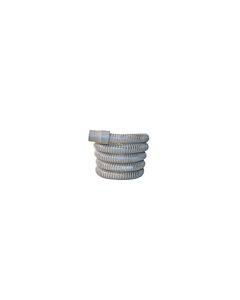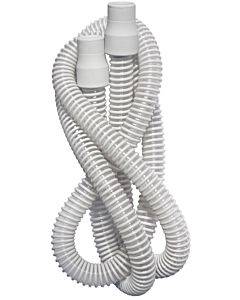A scientific overview of Breathing Circuits

Whether you need mechanical ventilation for a few hours or days post-surgery, they are lifesaving and help in breathing until you can breathe on your own. When you need to be on ventilation for the rest of your life and whether you choose to stay back in the nursing home or return home, you need medical help for constant monitoring and maintenance.
Hence, it is essential for family members to have a proper understanding of all the ventilation components especially the breathing circuits which is the most important part of the ventilator. Here is an overview.
What are breathing circuits?
Breathing circuits were primarily designed to deliver inhalational anesthetic agents to patients before surgery. A breathing circuit in the mechanical ventilator comprises of a tube, connectors, flow sensor, and expiratory valve. It serves as the airflow path between the patient and the device. Most breathing circuit sets come preassembled, or in multiple variants, disposable as well as reusable. Each breathing circuit fulfills three functions:
• To deliver adequate amounts of inhalation substances
• To deliver a constant supply of oxygen to the patient.
• To eliminate CO2 effectively and make sure none of it goes back with inspiration.
What are the types of circuits?
Breathing circuits or breathing systems were traditionally classified in the following range:
• Open circuits are boundary-less airways but are no longer used in clinical procedures for its absence of reservoir. These are non-rebreathing.
• Closed circuits are most common and have a complete boundary with no vents. These allow complete rebreathing.
• Semi-open circuits are not rebreathing circuits but use atmospheric air as the gaseous source. These are non-rebreathing as well.
• The semi-closed circuit has boundaries as well as vents and allows partial rebreathing. It delivers a controlled gaseous flow, prevents atmospheric air, and ventilates excess gases. These semi-closed circuits are further classified into five groups.
However, often some ventilation users are confused by this classification. To cope up with the confusion, breathing circuits now are classified by eponym (the name of the creator).
Rebreathing vs. Non-Rebreathing Circuits:
As already mentioned breathing circuits' primary functions are delivering medication and oxygen and eliminating carbon dioxide. However, the circuits are of two main types:
• Rebreathing Circuits that passage the expired gas through a soda lime canister for carbon dioxide absorption. This is then rebreathed by the patient. These circuits are recommended for patients over 10 lbs.
• Non-Rebreathing Circuits do not have a soda-lime canister but use a higher flow of fresh gas to eliminate the CO2. These are recommended for younger patients under 10lbs.
Breathing Circuit Components:
All of these circuits have some common components in use. They are connected to the patient through a mask or tracheostomy tubing. Some circuits have valves attached for the directional flow of the gases. Reservoir bags are generally present with additional components like humidifiers, peep valves, spirometers, pressure gauges, and more.
Properties of an ideal breathing circuit system:
As this is a vital part of the ventilator, these properties must be considered –
• Safe and simple to use.
• Delivers the required amount of medication gas mixture.
• Permits controlled ventilation among all age groups.
• Less flimsy and compact design structure and lightweight.
• Effective in eliminating CO2.
• Very low management cost.
How to clean a breathing circuit?
Single-use breathing circuits are designed to avoid cross-contamination and do not require cleaning. These are disposable circuits.
Reusable breathing circuits must be strictly cleaned and disinfected when used for more than 24 hours on a single patient.
There are three methods of disinfecting –
• Chemical disinfection – where the circuit is soaked in warm water and mild detergent and thoroughly washed.
• Ethyl Alcohol disinfection – where ethylene oxide is used.
• High-temperature pressure disinfection – where the circuits are disinfected for 5 minutes at 134℃. (For polycarbonate products temperature must be below 121℃).
There are several types of breathing circuits available in the market. All the above-mentioned information is common beyond brands and is provided for a better understanding of ventilation supplies.




Validate your login
Sign In
Create New Account